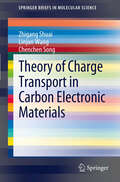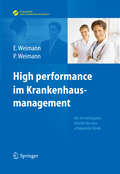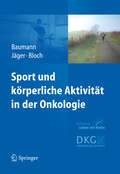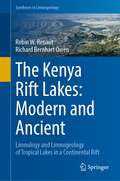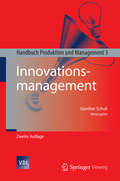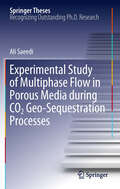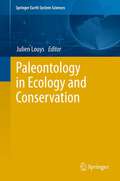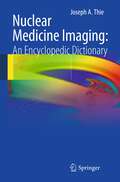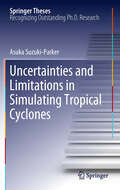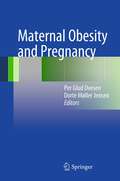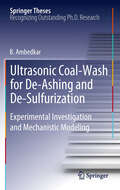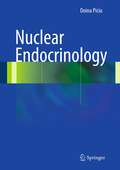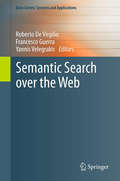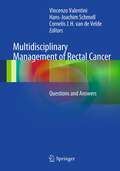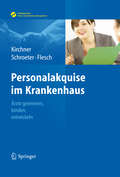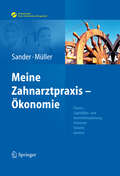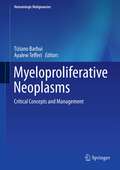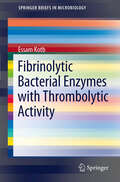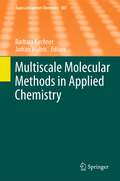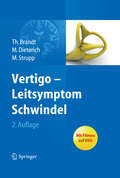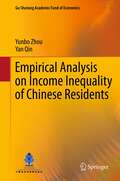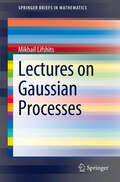- Table View
- List View
Power in the 21st Century: International Security and International Political Economy in a Changing World
by Jan-Frederik Kremer Enrico Fels Katharina KronenbergThe study of power is the nucleus of political science and international relations. As a shift of power from traditional industrial countries to emerging powers has been perceived since the turn of the century, this book aims to present innovative theoretical and empirical approaches that can increase our understanding of this transition. Scholars from the fields of international relations, international political economy, economics and security studies not only explore current theoretical debates on 'power' and 'power shifts' among entities, but also provide fresh insights into relevant aspects of international power in the 21st century. With a particular focus on aspects of international security, trade and production, new methods of identifying power and its sources are presented, and their potential implications and challenges are discussed.
Theory of Charge Transport in Carbon Electronic Materials
by Zhigang Shuai Linjun Wang Chenchen SongMechanism of charge transport in organic solids has been an issue of intensive interests and debates for over 50 years, not only because of the applications in printing electronics, but also because of the great challenges in understanding the electronic processes in complex systems. With the fast developments of both electronic structure theory and the computational technology, the dream of predicting the charge mobility is now gradually becoming a reality. This volume describes recent progresses in Prof. Shuai's group in developing computational tools to assess the intrinsic carrier mobility for organic and carbon materials at the first-principles level. According to the electron-phonon coupling strength, the charge transport mechanism is classified into three different categories, namely, the localized hopping model, the extended band model, and the polaron model. For each of them, a corresponding theoretical approach is developed and implemented into typical examples.
High performance im Krankenhausmanagement
by Edda Weimann Peter WeimannDer Band führt Einsteiger umfassend in das Management-Know-how für das Krankenhaus ein: Analyse, Strategie und Umsetzung. Managementwerkzeuge werden detailliert dargestellt und ihre erfolgreiche Anwendung als Teil eines Gesamtkonzeptes aufgezeigt. Die Autoren präsentieren Beispiele aus dem Klinikalltag und stellen innovative Konzepte für das Changemanagement vor. Praxiserprobte Lösungsvorschläge und Tipps aus der Praxis helfen bei der Umsetzung.
Sport und körperliche Aktivität in der Onkologie
by Freerk Baumann Wilhelm Bloch Elke JägerDie positive Wirkung von Sport in der Krebsprävention ist bekannt. Doch auch bei Tumorpatienten, das belegen Studien, mindert Bewegungstraining die Symptome des Fatigue-Syndroms, verbessert das psychische Befinden und erhöht die Lebensqualität. Die Spezialisten des Herausgeber- und Autorenteams vermitteln praxis- und forschungssrelevantes Wissen zum Thema Krebserkrankung und Sport: vom Ausdauer- und Krafttraining, den Möglichkeiten der ärztlichen Verordnung von Bewegung bis hin zu den Einschränkungen bei den unterschiedlichen Behandlungsformen.
The Kenya Rift Lakes: Limnology and Limnogeology of Tropical Lakes in a Continental Rift (Syntheses in Limnogeology)
by Robin W. Renaut Richard Bernhart OwenThis book is the first comprehensive account of the modern Kenya Rift Valley lakes and their precursor lakes preserved in the sedimentary record. The first part gives the broad geological and environmental background to the Kenya Rift and a history of research. In the second part, each modern lake is described from perspectives of geology, limnology, ecology, sedimentology and late Quaternary history. The fossil lake sediments, some linked to hominin sites, and their paleoenvironmental history are considered in the third part. In the fourth section, the global tectonic, volcanic and climate controls of lake evolution in continental rifts are examined. The last section discusses the resource potential of the lakes and their sediments, and the environmental issues that currently affect the modern lakes. This research-level book (geology, paleoecology) is illustrated throughout by original figures and photographs.
Innovationsmanagement
by Günther SchuhDer dritte Band des Handbuchs liefert einen aktuellen und umfassenden Überblick zum Gebiet Innovationsmanagement. Adressiert werden die Themen strategisches Innovationsmanagement, Produktplanung, Produktarchitekturgestaltung, Gestaltung von Produktentwicklungsprozessen, Innovationscontrolling und Product Lifecycle Management. Zu jedem der im Handbuch behandelten Gebiete werden grundlegende Zusammenhänge, Prinzipien und Methoden ausführlich dargestellt. Zusätzlich werden die vermittelten Theorien anhand ausgewählter Fallbeispiele veranschaulicht.
Biophysical Applications of Satellite Remote Sensing (Springer Remote Sensing/Photogrammetry)
by Jonathan M. HanesA variety of biophysical applications (e. g. leaf area index and gross primary productivity) have been derived from measurements of the Earth system obtained remotely by NASA's MODIS sensors and other satellite platforms. In Biophysical Applications of Satellite Remote Sensing, the authors describe major applications of satellite remote sensing for studying Earth's biophysical phenomena. The focus of the book lies on the broad palette of specific applications (metrics) of biophysical activity derived using satellite remote sensing. With in-depth discussions of satellite-derived biophysical metrics that focus specifically on theory, methodology, validation, major findings, and directions of future research, this book provides an excellent resource for remote sensing specialists, ecologists, geographers, biologists, climatologists, and environmental scientists.
Experimental Study of Multiphase Flow in Porous Media during CO2 Geo-Sequestration Processes
by Ali SaeediThere have been numerous computer-based simulation studies carried out on the subject of CO2 geo-sequestration. However, the amount of experimental data available in the literature on this topic, especially with regards to multiphase flow characteristics of fluid-rock systems during such processes, is very limited. This research was carried out with the aim of providing a better understanding of the multiphase fluid flow characteristics of fluid-rock systems during the geo-sequestration process. The ultimate goal of this research was to experimentally evaluate the change in a number of multiphase flow characteristics of the system over time caused by the potential chemical and physical/mechanical processes occurring during deep CO2 disposal. In order to achieve this goal the effects of cyclic/alternating CO2-brine flooding, flow direction, existence of residual hydrocarbon (natural gas) and change in the reservoir stress field on the system's multiphase flow behaviour were investigated. Until completion of this study there were no experimental data published in the literature addressing the above mentioned issues and the results obtained, and published within this thesis were the first of their kind.
Paleontology in Ecology and Conservation
by Julien LouysThe fossil record contains unique long-term insights into how ecosystems form and function which cannot be determined simply by examining modern systems. It also provides a record of endangered species through time, which allow us to make conservation decisions based on thousands to millions of years of information. The aim of this book is to demonstrate how palaeontological data has been or could be incorporated into ecological or conservation scientific studies. This book will be written by palaeontologists for modern ecologists and conservation scientists. Manuscripts will fall into one (or a combination) of four broad categories: case studies, review articles, practical considerations and future directions. This book will serve as both a 'how to guide' and provide the current state of knowledge for this type of research. It will highlight the unique and critical insights that can be gained by the inclusion of palaeontological data into modern ecological or conservation studies.
Nuclear Medicine Imaging: An Encyclopedic Dictionary
by Joseph A. ThieThe rapidly growing area of nuclear medicine imaging receives only limited attention in broad-based medical dictionaries. This encyclopedic dictionary is intended to fill the gap. More than 400 entries of between one and three paragraphs are included, defining and carefully explaining terms in an appropriate degree of detail. The dictionary encompasses concepts used in planar, SPECT, and PET imaging protocols and covers both scanner operations and popular data analysis approaches. In spite of the mathematical complexities in the acquisition and analysis of images, the explanations given are easy to understand and many helpful concrete examples are provided. The book will be ideal for those who wish to obtain a rapid grasp of a concept beyond a definition of a few words but do not have the time to search the reference literature. The almost tutorial-like style accommodates the needs of students, nuclear medicine technologists, and varieties of other medical professionals.
Uncertainties and Limitations in Simulating Tropical Cyclones
by Asuka Suzuki-ParkerThe thesis work was in two major parts: development and testing of a new approach to detecting and tracking tropical cyclones in climate models; and application of an extreme value statistical approach to enable assessment of changes in weather extremes from climate models. The tracking algorithm applied a creative phase-space approach to differentiate between modeled tropical cyclones and their mid-latitude cousins. A feature here was the careful attention to sensitivity to choice of selection parameters, which is considerable. The major finding was that the changes over time were relatively insensitive to these details. This new approach will improve and add confidence to future assessments of climate impacts on hurricanes. The extremes approach utilized the Generalized Pareto Distribution (one of the standard approaches to statistics of extremes) applied to present and future hurricane distributions as modeled by a regional climate model, then applied the changes to current observations to extract the changes in the extremes. Since climate models cannot resolve these extremes directly, this provides an excellent method of determining weather extremes in general. This is of considerable societal importance as we are most vulnerable to such extremes and knowledge of their changes enables improved planning and adaptation strategies.
Maternal Obesity and Pregnancy
by Dorte Møller Jensen Per Glud OvesenA dramatic and worldwide increase is occurring in the prevalence of overweight and obesity in women of childbearing age. Obese women carry a significant excess risk of a variety of serious complications during pregnancy, and in addition, maternal obesity predisposes to obesity in the offspring. This book provides a timely update on the latest knowledge on maternal obesity and pregnancy. A very wide range of issues are covered, including macrosomia and associated shoulder dystocia; the risk of miscarriage, malformations, and complications of pregnancy; the impact of hyperglycemia; clinical management; consequences for anesthesia and ultrasound; impacts on breastfeeding, fertility, and childhood obesity; and pregnancy following gastric surgery. All of the authors are recognized experts in their fields, and the book has been designed to meet the practical needs of obstetricians, gynecologists, internists, and general practitioners.
Ultrasonic Coal-Wash for De-Ashing and De-Sulfurization
by B. AmbedkarThis study focuses on the physical aspects of ultrasonic de-ashing and de-sulfurization, such as cavitation, streaming and their combined effects. Ambedkar Balraj proposes an ultrasound-assisted coal particle breakage mechanism and explores aqueous and solvent-based ultrasonic techniques for de-ashing and de-sulfurization. Ambedkar designs a Taguchi L-27 fractional-factorial matrix to assess the individual effects of key process variables. In this volume he also describes process optimization and scale-up strategies. The author provides a mechanism-based model for ultrasonic reagent-based coal de-sulfurization, proposes a flow diagram for ultrasonic methods of high-throughput coal-wash and discusses the benefits of ultrasonic coal-wash. Coal will continue to be a major fuel source for the foreseeable future and this study helps improve its use by minimising ash and sulfur impurities.
Nuclear Endocrinology
by Doina PiciuNuclear medicine is an important element of daily practice for the endocrinologist, both for diagnosis and for treatment. The continuous rapid development of nuclear medicine procedures has created the need for a concise, up-to-date practical guide that presents the essential information required by the endocrinologist. This book is designed to ensure ease of use in clinical practice and provides the most relevant information on nuclear medicine as applied to endocrine pathology. It is divided into three sections covering general aspects of nuclear medicine, the role of nuclear endocrinology in diagnosis, and the role of nuclear endocrinology in therapy. The endocrine glands are covered by organ and by pathology. Pertinent background information is provided, choice of radiopharmaceutical is explained, and the role of different image acquisition techniques is discussed. In addition, informative clinical cases are presented with the aid of high-quality images.
Semantic Search over the Web
by Roberto De Virgilio Francesco Guerra Yannis VelegrakisThe Web has become the world's largest database, with search being the main tool that allows organizations and individuals to exploit its huge amount of information. Search on the Web has been traditionally based on textual and structural similarities, ignoring to a large degree the semantic dimension, i.e., understanding the meaning of the query and of the document content. Combining search and semantics gives birth to the idea of semantic search. Traditional search engines have already advertised some semantic dimensions. Some of them, for instance, can enhance their generated result sets with documents that are semantically related to the query terms even though they may not include these terms. Nevertheless, the exploitation of the semantic search has not yet reached its full potential. In this book, Roberto De Virgilio, Francesco Guerra and Yannis Velegrakis present an extensive overview of the work done in Semantic Search and other related areas. They explore different technologies and solutions in depth, making their collection a valuable and stimulating reading for both academic and industrial researchers. The book is divided into three parts. The first introduces the readers to the basic notions of the Web of Data. It describes the different kinds of data that exist, their topology, and their storing and indexing techniques. The second part is dedicated to Web Search. It presents different types of search, like the exploratory or the path-oriented, alongside methods for their efficient and effective implementation. Other related topics included in this part are the use of uncertainty in query answering, the exploitation of ontologies, and the use of semantics in mashup design and operation. The focus of the third part is on linked data, and more specifically, on applying ideas originating in recommender systems on linked data management, and on techniques for the efficiently querying answering on linked data.
Semantic Search over the Web (Data-Centric Systems and Applications)
by Roberto De Virgilio Francesco Guerra Yannis VelegrakisThe Web has become the world’s largest database, with search being the main tool that allows organizations and individuals to exploit its huge amount of information. Search on the Web has been traditionally based on textual and structural similarities, ignoring to a large degree the semantic dimension, i.e., understanding the meaning of the query and of the document content. Combining search and semantics gives birth to the idea of semantic search. Traditional search engines have already advertised some semantic dimensions. Some of them, for instance, can enhance their generated result sets with documents that are semantically related to the query terms even though they may not include these terms. Nevertheless, the exploitation of the semantic search has not yet reached its full potential. In this book, Roberto De Virgilio, Francesco Guerra and Yannis Velegrakis present an extensive overview of the work done in Semantic Search and other related areas. They explore different technologies and solutions in depth, making their collection a valuable and stimulating reading for both academic and industrial researchers.The book is divided into three parts. The first introduces the readers to the basic notions of the Web of Data. It describes the different kinds of data that exist, their topology, and their storing and indexing techniques. The second part is dedicated to Web Search. It presents different types of search, like the exploratory or the path-oriented, alongside methods for their efficient and effective implementation. Other related topics included in this part are the use of uncertainty in query answering, the exploitation of ontologies, and the use of semantics in mashup design and operation. The focus of the third part is on linked data, and more specifically, on applying ideas originating in recommender systems on linked data management, and on techniques for the efficiently querying answering on linked data.
Multidisciplinary Management of Rectal Cancer
by Cornelis J. Velde Hans-Joachim Schmoll Vincenzo ValentiniThis book seeks to promote an integrated approach among the various specialists involved in the management of rectal cancer with a view to ensuring that treatment is tailored appropriately to the individual patient. For ease of use, a question and answer format is employed. The focus is on those issues typically confronted during daily clinical practice in relation to risk factors, imaging, surgery, radiotherapy, and chemotherapy. The services of an outstanding panel of authors representative of the major European oncological societies have been acquired in order to formulate the questions and provide the answers. All who need assistance in addressing concerns that arise from the need for multidisciplinary management of rectal cancer will find the book to be an ideal source of helpful information.
Personalakquise im Krankenhaus
by Helga Kirchner Markus Flesch Michael SchroeterDer Wettbewerb um gutes Personal wird härter. Und weil in Dienstleistungsunternehmen wie Krankenhäusern die Kompetenz der Mitarbeiter der Schlüssel zum Erfolg ist, steht die Frage der Personalgewinnung und -sicherung dort inzwischen weit oben auf der Agenda. In dem Band werden die wichtigsten Aspekte der Personalgewinnung besprochen: vom Recruiting in sozialen Netzwerken und auf dem globalisierten Arbeitsmarkt über Aus-, Fort- und Weiterbildungskonzepte bis zum alters- und familiengerechten Arbeiten. Mit Praxistipps, Zusammenfassungen, Checklisten.
Sander/Müller, Meine Zahnarztpraxis – Ökonomie
by Thomas Sander Michal-Constanze MüllerDas einzige Buch zum Thema speziell für Zahnmediziner zeigt, wie niedergelassene Zahnärzte Kosten und Steuern sparen können - in der Praxis und im Privatbereich. Die Autoren stellen die Möglichkeiten einer strategischen Finanz-, Liquiditäts- und Investitionsplanung vor. Als Teil eines optimierten Gesamtkonzepts lassen sich mithilfe dieser Instrumente das Praxismanagement und die Wettbewerbsposition wesentlich verbessern.
Myeloproliferative Neoplasms
by Ayalew Tefferi Tiziano BarbuiThis book focuses on three of the main categories of myeloproliferative neoplasm: polycythemia vera, essential thrombocythemia, and primary myelofibrosis. Relevant laboratory and clinical advances are comprehensively covered, and great emphasis is placed on the practical issues that challenge physicians in their daily practice. The main topics considered thus include contemporary diagnostic approaches, the value and limitations of mutation screening for diagnostic and prognostic purposes, risk stratification in terms of both survival and other disease complications such as leukemic transformation and thrombosis, and modern therapeutic strategies, including conventional drugs, allogeneic stem cell transplantation, and experimental drugs still under study. The reader will find Critical Concepts and Management Recommendations in Myeloproliferative Neoplasms to be an invaluable and up-to-date source of information from leading authorities in the field.
Fibrinolytic Bacterial Enzymes with Thrombolytic Activity
by Essam KotbStress, high blood pressure, smoking, pollution, fast foods, overweight, excessive travelling, surgery, less movement are common features in our modern life. These features are risky for blood clotting disorders. According to WHO, over 29% of the total mortalities worldwide are due to thrombosis. By the year, 2020 cardiovascular diseases (CVDs) may cause an estimated 25 million deaths per year, thus antithrombotic therapy is of great interest. The available thrombolytic agents such as urokinase are highly expensive, antigenic, quite unspecific, pyretogenic and hemorrhagenic. Therefore, the production of fibrinolysing enzymes, which rapidly dissolute thrombi within the vascular tree, without the detriments by microorganisms, as described in this book, is the desirable aim of today's research.
Multiscale Molecular Methods in Applied Chemistry
by Barbara Kirchner Jadran VrabecFirst-Principles-Based Multiscale, Multiparadigm Molecular Mechanics and Dynamics Methods for Describing Complex Chemical Processes, by A. Jaramillo-Botero, R. Nielsen, R. Abrol, J. Su, T. Pascal, J. Mueller and W. A. Goddard.- Dynamic QM/MM: A Hybrid Approach to Simulating Gas-Liquid Interactions, by S. Yockel and G. C. Schatz.- Multiscale Modelling in Computational Heterogeneous Catalysis, by F. J. Keil.- Real-World Predictions from Ab Initio Molecular Dynamics Simulations, by B. Kirchner, P. J. di Dio and J. Hutter.- Nanoscale Wetting Under Electric Field from Molecular Simulations, by C. D. Daub, D. Bratko and A. Luzar.- Molecular Simulations of Retention in Chromatographic Systems: Use of Biased Monte Carlo Techniques to Access Multiple Time and Length Scales, by J. L. Rafferty, J. I. Siepmann, M. R. Schure.- Thermodynamic Properties for Applications in Chemical Industry via Classical Force Fields, by G. Guevara-Carrion, H. Hasse and J. Vrabec.- Multiscale Approaches and Perspectives to Modeling Aqueous Electrolytes and Polyelectrolytes, by L. Delle Site, C. Holm and N. F. A. van der Vegt.- Coarse-Grained Modeling for Macromolecular Chemistry, by H. A. Karimi-Varzaneh and F. Müller-Plathe.-
Vertigo - Leitsymptom Schwindel
by Thomas Brandt Marianne Dieterich Michael StruppSchwindel ist keine Diagnose, sondern ein unspezifisches Symptom für unterschiedliche Erkrankungen. Das Buch unterstützt Fachärzte, die an Schwindel leidende Patienten behandeln. Die wichtigsten Schwindelsyndrome werden dargestellt, Untersuchungen ausführlich geschildert und mit Bildern illustriert. Die Kapitelstruktur folgt der Praxis: Anamnese, Klinik, Pathophysiologie und therapeutische Prinzipien, Therapie, Wirksamkeit sowie Differenzialdiagnose und klinische Probleme. Die 2. Auflage wurde aktualisiert und um neue Untersuchungsmethoden ergänzt.
Empirical Analysis on Income Inequality of Chinese Residents
by Yan Qin Yunbo ZhouThe subject of this book is discussing the income inequality of Chinese residents, its change and the factors that impact it. In this book all kinds of quantitative methods, including decomposing Gini Coefficients method, Fei-Ranis method, two-sectors model and other econometric models. Some special features are that in this book, a two-sectors model was set up to analyze the impact of population migration from urban areas to rural areas on income inequality of total residents, and the inverted U hypothesis was tested by time-series regression model. The inverted U hypothesis is supported by the change of income inequality of Chinese total residents which is different from the conclusion of present reaches. In additional, the impact of rent-seeking income on inequality was discussed, an economic mode was founded to explain the causes of rent-seeking activities in China's present stage.
Lectures on Gaussian Processes
by Mikhail LifshitsGaussian processes can be viewed as a far-reaching infinite-dimensional extension of classical normal random variables. Their theory presents a powerful range of tools for probabilistic modelling in various academic and technical domains such as Statistics, Forecasting, Finance, Information Transmission, Machine Learning - to mention just a few. The objective of these Briefs is to present a quick and condensed treatment of the core theory that a reader must understand in order to make his own independent contributions. The primary intended readership are PhD/Masters students and researchers working in pure or applied mathematics. The first chapters introduce essentials of the classical theory of Gaussian processes and measures with the core notions of reproducing kernel, integral representation, isoperimetric property, large deviation principle. The brevity being a priority for teaching and learning purposes, certain technical details and proofs are omitted. The later chapters touch important recent issues not sufficiently reflected in the literature, such as small deviations, expansions, and quantization of processes. In university teaching, one can build a one-semester advanced course upon these Briefs.

